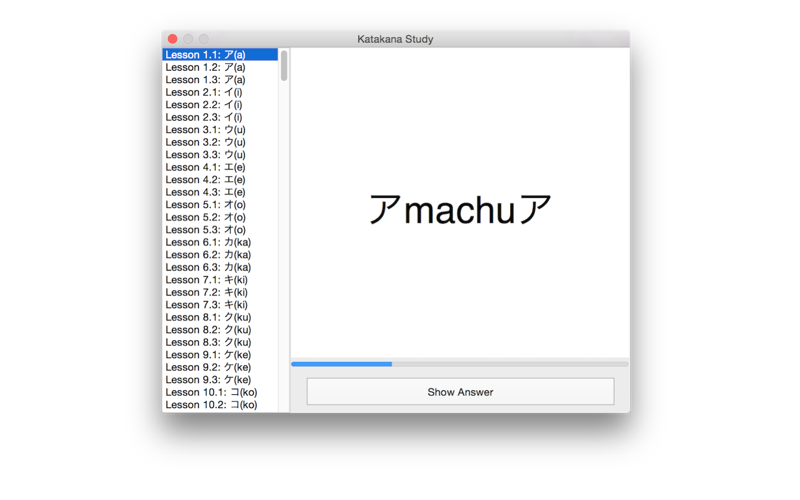
Learn to read Katakana using our extensive set of exercises (a total of over 300 exercises).
Answers to the reading exercises are represented with romaji (Japanese transcribed as Roman characters) as well as with Japanese audio.
Katakana Study uses partial substitution as an effective method of teaching the reading of Katakana characters.
New characters are introduced gradually and intermixed with romaji (Roman characters), which makes it easy to learn katakana.
For example, at the beginning, when you don’t know any katakana characters and you’re learning the ア character (which reads ‘a’ in romaji), whole Japanese words in the exercises are written in romaji with only the ア character written in katakana: アrumi (arumi), アrabu (arabu), アideア (aidea), etc.
As you make progress learning katakana, more and more katakana is used instead of romaji.
For example, when you’re learning the ニ character (which reads ’ni’), you’ve already learned many other katakana characters, and so not only the ニ character, but also all the others that you’ve learned are used instead of romaji: ドmiニク (dominiku), ニ-アmaイア (ni-amaia), ダニ- (dani-), etc.
The author of Katakana Study is also your fellow Japanese learner. His previous attempts to learn Katakana had failed spectacularly. Everything changed when he created Katakana Study. He could finally master katakana, and he spent only 2 days to do so.
Now it is your turn!



